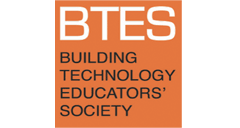Pneumatic Reality: An Exploration of Inflatables as a Pedagogical Design Tool
Abstract
Since the 1960s, inflatable structures have captivated generations of architects and designers. This method of construction has fostered a diversity of responses in fields from architecture and visual arts to fashion and play. Pneumatic Reality was a course that explored inflatables as a rapid "design-build" tool in which students translated digital sketches into building-scale, spatial experiences. Through this approach, students explored a range of architectural topics including ephemerality, the mediation of environment, the notion of boundary and amorphous form. The inflatable became the conduit through which students engaged in discourse at the intervals of permanence and temporality, old and new, natural and synthetic. Moreover, this process invited students to discuss the idea of air systems and the medium of air itself in architecture and culture at large. The Pneumatic Reality design pipeline started in the digital realm inviting students to hypothesize through modeling potential inflatable forms. The process then progressed to a study in translation via unrolled surfaces or tessellations, and finally, manifested in material through full-scale pattern making. In a matter of hours, with minimal, low-cost or even recycled materials, students were able to produce the first iteration of their design. Due to the simplicity of the fabrication method, what followed was a process of rapid iteration at an architectural scale, a form of spatial sketching. Students tested and responded to materials while confronting questions of form and scale. The Pneumatic Reality project took on additional significance in relationship to the legacy of Frank Lloyd Wright. In a lesser- known project, Wright explored inflatable designs by envisioning a method to construct low-cost shelters. Students at The School of Architecture (at Taliesin) revived this experimentation by building their own inflatables and then inserting them into the historic architecture and surrounding landscape thereby engaging in a direct dialogue with their environment. Due to the inherent temporality of these design inventions, this project offered up inflatables as a means through which students could temporarily disrupt spaces they already inhabited. An inflatable structure transforms the moment people begin to interact with it. This interaction is a critical component to understanding the power of the inflatable as a teaching device in terms of its relationship to the human body and permutable program. Designs are at once an object in space and an experience to inhabit. For students at Taliesin Spring Green, their inflatables became sites for community engagement. Students' projects morphed from gathering areas to placemaking markers to an interactive gallery exhibition. Therefore, the inflatables became a means through which students reimagined program. Overall, this project provided an opportunity for students to think critically about Wright and his work, and posited architecture as an ecologically based, collaborative, open-source flow of ideas and things.
Keywords: inflatable, fabrication, design-build, pedagogy, ecology
How to Cite:
Protz, S., (2023) “Pneumatic Reality: An Exploration of Inflatables as a Pedagogical Design Tool”, Building Technology Educators’ Society 2023(1), 327-334. doi: https://doi.org/10.7275/btes.1970
Downloads:
Download PDF
353 Views
73 Downloads
